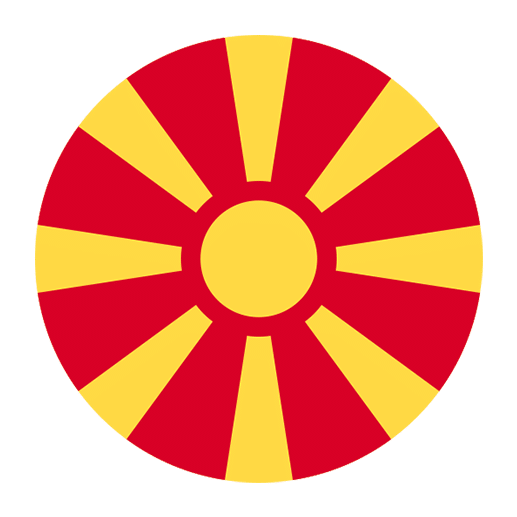The Macedonian language, a member of the South Slavic language family, is a fascinating tapestry woven from its historical interactions with various cultures and languages. This rich linguistic heritage is reflected in its vocabulary, much of which consists of loanwords borrowed from neighboring languages and those of invaders who left their mark on the region. Understanding Macedonian loanwords and their origins provides insight into the historical, cultural, and social exchanges that have shaped the language over time.
Historical Context
The history of the Macedonian language is a story of conquests, migrations, and cultural exchanges. The region of Macedonia, located in the Balkan Peninsula, has been a crossroads for various civilizations and empires. From the ancient Greeks and Romans to the Byzantines, Ottomans, and Slavs, each group has contributed to the linguistic landscape of Macedonia.
Ancient Greek Influence
The Macedonian region was heavily influenced by Ancient Greece, particularly during the time of Alexander the Great. Greek was the lingua franca of the Hellenistic world, and many Greek words found their way into Macedonian. This influence is evident in various aspects of the language, including vocabulary related to politics, philosophy, art, and science. For example, the Macedonian word for school, “училиште” (učilište), has roots in the Greek word “σχολή” (scholē).
Roman and Byzantine Periods
The Roman Empire’s expansion into the Balkans brought Latin into the region, and its influence persisted even after the fall of the Western Roman Empire. The subsequent Byzantine Empire, which lasted for over a millennium, further cemented the presence of Greek in the region. Many Latin and Greek loanwords from this period pertain to administration, law, religion, and everyday life. For instance, the Macedonian word for calendar, “календар” (kalendar), is derived from the Latin “calendarium.”
Slavic Migrations
The arrival of the Slavs in the Balkans during the 6th and 7th centuries marked a significant linguistic shift. The Slavic languages began to dominate the region, giving rise to the South Slavic language group, which includes Macedonian. While the core vocabulary of Macedonian is Slavic, the language also absorbed many words from the pre-Slavic inhabitants and neighboring cultures.
Ottoman Influence
One of the most profound influences on the Macedonian language came from the Ottoman Empire, which ruled the Balkans for nearly five centuries. Turkish loanwords are prevalent in Macedonian, reflecting the extensive cultural and administrative integration during Ottoman rule. These loanwords cover a wide range of topics, including governance, cuisine, architecture, and everyday objects. For example, the word for coffee, “кафе” (kafe), comes from the Turkish “kahve.”
Categories of Loanwords
Loanwords in Macedonian can be categorized based on their origins and the domains they pertain to. Here, we will explore some of the most significant sources of loanwords in Macedonian.
Greek Loanwords
Greek has had a lasting impact on Macedonian, especially in areas related to education, science, and religion. Some common Greek loanwords include:
– “Филозофија” (filozofija) – philosophy
– “Математика” (matematika) – mathematics
– “Икономија” (ikonomija) – economy
– “Библија” (biblija) – bible
These words reflect the deep cultural and intellectual exchange between the Greek and Macedonian peoples.
Latin Loanwords
Latin loanwords entered Macedonian primarily during the Roman and Byzantine periods. They are often found in legal, administrative, and ecclesiastical contexts. Examples include:
– “Капитал” (kapital) – capital
– “Цивилизација” (civilizacija) – civilization
– “Доктор” (doktor) – doctor
– “Религија” (religija) – religion
These words highlight the influence of Roman law and the Christian church on Macedonian society.
Turkish Loanwords
The Ottoman period left a significant mark on the Macedonian vocabulary. Turkish loanwords are commonly used in everyday speech and cover a wide range of topics. Some examples are:
– “Чај” (čaj) – tea
– “Долап” (dolap) – cupboard
– “Калпак” (kalpak) – hat
– “Софра” (sofra) – dining table
These words illustrate the integration of Turkish culture and lifestyle into Macedonian society.
Albanian Loanwords
The proximity and historical interactions between Macedonians and Albanians have led to the incorporation of Albanian loanwords into Macedonian. These words are often related to agriculture, animal husbandry, and everyday activities. Examples include:
– “Кула” (kula) – tower
– “Кош” (koš) – basket
– “Брада” (brada) – beard
These loanwords reflect the shared rural and pastoral traditions of the two communities.
Linguistic Adaptation
Loanwords in Macedonian are not merely borrowed; they are adapted to fit the phonological, morphological, and syntactic rules of the language. This process of adaptation ensures that the loanwords are seamlessly integrated into the linguistic system.
Phonological Adaptation
Phonological adaptation involves adjusting the sounds of the borrowed words to match the phonetic inventory of Macedonian. For example, the Turkish word “kahve” becomes “кафе” (kafe) in Macedonian, with the vowel sounds modified to fit Macedonian pronunciation patterns.
Morphological Adaptation
Macedonian often modifies the morphological structure of loanwords to align with its grammatical rules. This includes adding appropriate suffixes and prefixes to borrowed words. For instance, the Greek word “σχολή” (scholē) is adapted into Macedonian as “училиште” (učilište), with the addition of the Slavic suffix “-иште” to form a noun.
Syntactic Adaptation
Loanwords are also integrated syntactically to fit Macedonian sentence structures. This means that borrowed words must conform to Macedonian word order and grammatical rules. For example, the Latin word “doctor” is used in Macedonian as “доктор” (doktor), and it follows the same syntactic rules as native Macedonian nouns.
Cultural Significance
The presence of loanwords in Macedonian is not merely a linguistic phenomenon; it is a reflection of the region’s rich cultural heritage. Each loanword carries with it a story of historical interaction, trade, conquest, and cultural exchange.
Preservation of History
Loanwords serve as linguistic artifacts that preserve the history of Macedonia. They provide clues about the various peoples and cultures that have interacted with the region over the centuries. By studying loanwords, linguists and historians can trace the movements of populations, the influence of empires, and the diffusion of cultural practices.
Cultural Identity
The diverse linguistic influences in Macedonian contribute to a unique cultural identity. The language embodies the region’s multicultural past and its ability to adapt and integrate different elements. This linguistic diversity is a source of pride for Macedonians, as it reflects their resilience and openness to external influences.
Modern Usage
In contemporary Macedonian society, loanwords continue to play a vital role. They are used in everyday conversation, literature, media, and education. The ability to incorporate and adapt loanwords demonstrates the dynamism and flexibility of the Macedonian language.
Challenges and Controversies
The use of loanwords in Macedonian is not without its challenges and controversies. Some linguistic purists advocate for the preservation of the “pure” Slavic elements of the language, while others embrace the multicultural influences that have shaped Macedonian.
Linguistic Purism
Linguistic purism is the idea that a language should be preserved in its “pure” form, free from foreign influences. In the context of Macedonian, some purists argue that the language should minimize the use of loanwords and instead promote native Slavic vocabulary. This perspective is motivated by a desire to preserve cultural and linguistic heritage.
Embracing Multiculturalism
On the other hand, many linguists and speakers of Macedonian embrace the multicultural nature of the language. They argue that loanwords enrich the language and reflect the historical reality of cultural exchange. This perspective views linguistic diversity as a strength rather than a threat to cultural identity.
Balancing Act
Ultimately, the use of loanwords in Macedonian represents a balancing act between preserving linguistic heritage and embracing cultural diversity. The language continues to evolve, and loanwords are an integral part of this ongoing process.
Conclusion
Understanding Macedonian loanwords and their origins provides valuable insights into the historical and cultural interactions that have shaped the language. From ancient Greek and Latin to Turkish and Albanian, each source of loanwords reflects a unique chapter in Macedonia’s history. The adaptation of these loanwords into Macedonian demonstrates the language’s dynamism and ability to integrate diverse influences.
While the use of loanwords may be a topic of debate, it is undeniable that they contribute to the richness and complexity of the Macedonian language. By studying loanwords, language learners can gain a deeper appreciation for the cultural heritage and historical context of Macedonian. Whether you are a linguist, a language enthusiast, or simply curious about the Macedonian language, exploring its loanwords is a fascinating journey into the past and present of this vibrant linguistic tapestry.

